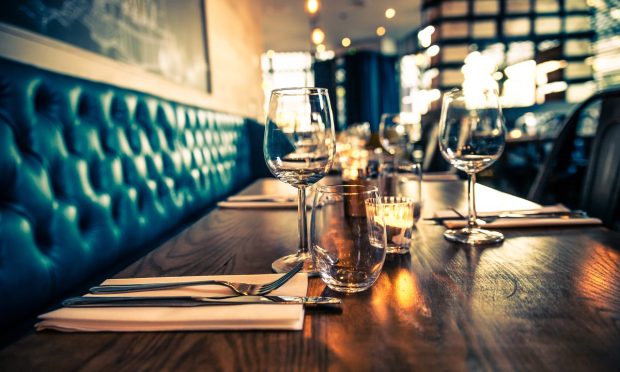Food Tech Platform C3 Questions The Long-Term Viability Of Legacy Restaurants

As food tech platforms look to parlay the rapid growth experienced during the pandemic into long-term viability, many are rethinking the physical space. C3, for one, announced an $80 million investment earlier this month to grow its global presence and build out its technology, following a $100 million deal in June to bring 40 of its restaurant brands to Saudi Arabia. The company, which began with virtual restaurant concepts prepared in ghost kitchens, has been establishing physical spaces for its brands, including omnichannel food halls. Now, the company believes that its model, fitting a wide range of restaurant concepts into small physical spaces, will become the norm.
“Food brands are beginning to realize … that current dining spaces are being severely underutilized and can generate a staggering amount of additional revenue through the ghost kitchen model,” C3 CEO Sam Nazarian told PYMNTS in an interview. “As we move into a post-pandemic era, we’re going to see many more brick-and-mortar concepts operating eight to 10 additional delivery-only brands via ghost or digital kitchens.”
The ghost kitchen space is certainly growing, with major restaurant companies adding new virtual locations by the hundreds and adding new brands to their rosters. Additionally, many restaurants are using the delivery-only model to test out new concepts and new locations without the capex traditionally associated with such an undertaking. Meanwhile, consumer goods and food delivery service Gopuff just announced its own delivery-only kitchens in an effort to embed its offerings deeper in consumers’ daily routines.
Taking It Global
The company is growing very quickly in the U.S., with this already fast expansion accelerated by its recent partnership with point-of-sale (POS) integration company Chowly, which aims to bring C3’s U.S. digital brand location count to 1,000 by the end of 2021 and to 12,000 international locations by 2023.
“There are certainly challenges with introducing completely new-to-market restaurant brands in any region – domestically, or abroad, for the first time,” said Nazarian. However, he said, given the “loyal cult following” the company’s culinary brands have built in the United States, the company is “confident” in the ability of its brands to take hold in the Middle East and North Africa (MENA).
He believes that the success of these restaurant brands in the region will be helped by the cultural cache of American foods for many of these countries’ residents — especially those who have been able to travel around the world. Nazarian said, “MENA residents have developed an affinity for American-style fare through their international travels.”
Go The Way Of The Dodo
C3 does not believe that the traditional restaurant model will be viable in the future, and that dine-in will only work as one of several channels for culinary brands.
“Legacy restaurants won’t be able to survive in the years to come unless they are equipped to handle the dining demands of millennials and Gen Z,” he said, “so they will need to adapt their current business models and structures to be tech-forward in order to be successful.”
For now, at least, the data suggest that dine-in is back. OpenTable reports that, as of Tuesday (July 20), seatings both in the United States and worldwide have recovered fully to 2019 levels. Still, consumers are seeking out digital channels far more than before the pandemic. PYMNTS’ study, The Bring-It-To-Me Economy: How Online Marketplaces And Aggregators Drive Omnichannel Commerce, created in collaboration with Carat by Fiserv, finds that almost half of all consumers are buying food from a restaurant’s website and having it delivered to their homes somewhat or much more often than before the pandemic.
“I expect we’re going to see more restaurants focusing on enhancing their tech in the coming years to create an experience that is just as immersive and personalized online and via delivery apps as it is at the restaurant itself,” said Nazarian.
New Channels, New Spaces
Nazarian believes that restaurants’ physical spaces will transform to reflect the continuing “heightened interest in delivery,” which he believes “will remain a dining trend for some time.”
Sure enough, PYMNTS research from the July edition of Delivering On Restaurant Rewards, a PYMNTS and Paytronix collaboration, finds that 87 percent of consumers who are well-off financially and 90 percent of those whose finances are recovering plan to maintain some or all of their online ordering habits going forward.
He predicts that many restaurants will redesign their loading stations where drivers pick up delivery orders so that this process goes more quickly and does not interrupt the flow for in-store customers. Additionally, he believes pickup stations will undergo a similar redesign that will reflect the growing space the channel occupies in many brands’ sales mixes.
He predicted, “So often, a grab-and-go or pickup section was an afterthought thrown into a corner, and we’re expecting to see these take up even more space in future dining spaces.”
With these physical updates, omnichannel-focused restaurants’ brick-and-mortar spaces can begin to reflect the sweeping changes that the digital shift has brought to the industry.
